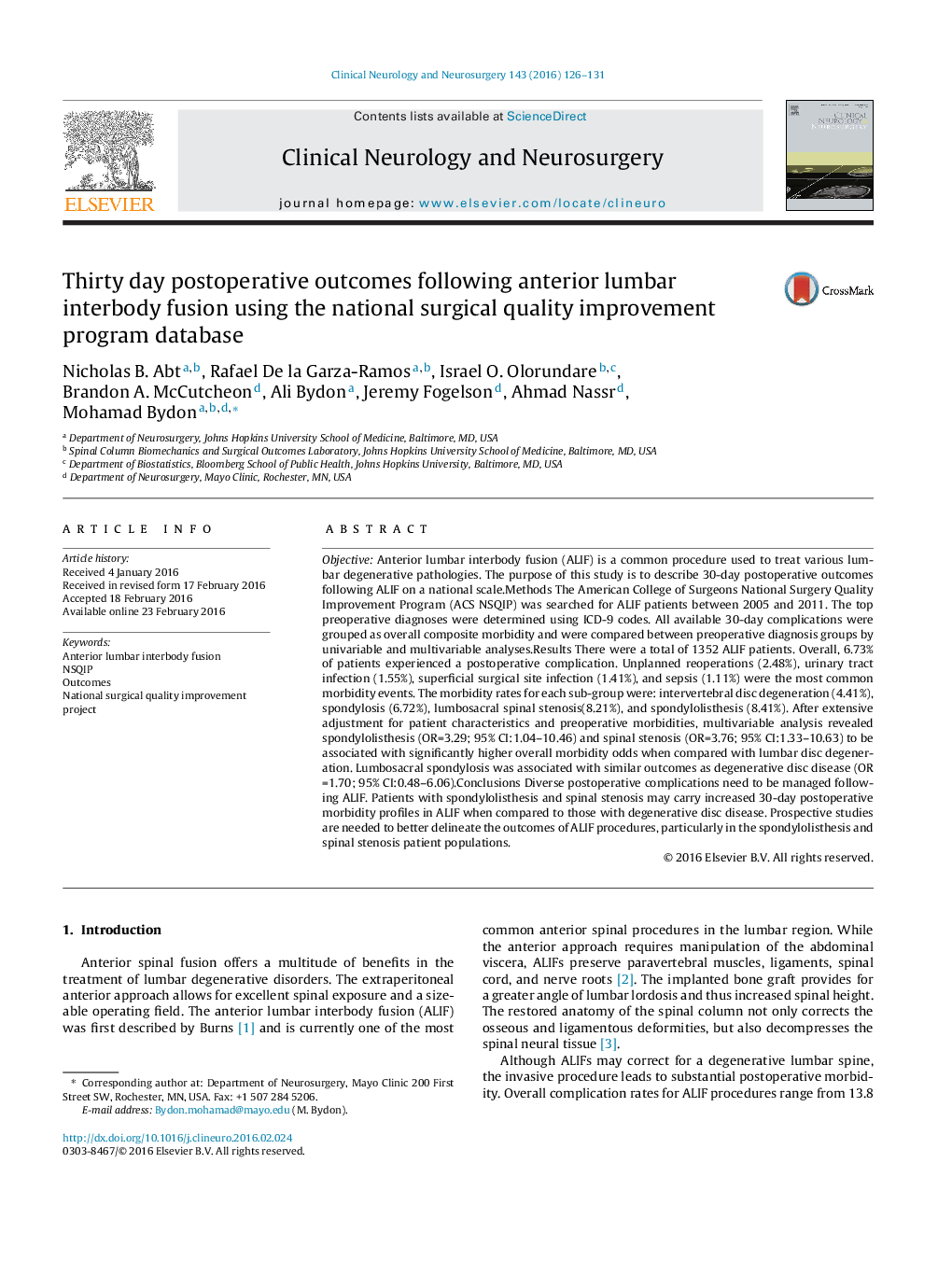| کد مقاله | کد نشریه | سال انتشار | مقاله انگلیسی | نسخه تمام متن |
|---|---|---|---|---|
| 3039647 | 1579679 | 2016 | 6 صفحه PDF | دانلود رایگان |
• A total of 1352 ALIF patients between 2005 and 2011 were analyzed using NSQIP.
• Spondylolisthesis and spinal stenosis carry increased postoperative morbidity.
• The complication that occurred with the greatest frequency was unplanned reoperation.
• Prospective studies are needed to better delineate the outcomes of ALIF procedures
ObjectiveAnterior lumbar interbody fusion (ALIF) is a common procedure used to treat various lumbar degenerative pathologies. The purpose of this study is to describe 30-day postoperative outcomes following ALIF on a national scale.Methods The American College of Surgeons National Surgery Quality Improvement Program (ACS NSQIP) was searched for ALIF patients between 2005 and 2011. The top preoperative diagnoses were determined using ICD-9 codes. All available 30-day complications were grouped as overall composite morbidity and were compared between preoperative diagnosis groups by univariable and multivariable analyses.Results There were a total of 1352 ALIF patients. Overall, 6.73% of patients experienced a postoperative complication. Unplanned reoperations (2.48%), urinary tract infection (1.55%), superficial surgical site infection (1.41%), and sepsis (1.11%) were the most common morbidity events. The morbidity rates for each sub-group were: intervertebral disc degeneration (4.41%), spondylosis (6.72%), lumbosacral spinal stenosis(8.21%), and spondylolisthesis (8.41%). After extensive adjustment for patient characteristics and preoperative morbidities, multivariable analysis revealed spondylolisthesis (OR=3.29; 95% CI:1.04–10.46) and spinal stenosis (OR=3.76; 95% CI:1.33–10.63) to be associated with significantly higher overall morbidity odds when compared with lumbar disc degeneration. Lumbosacral spondylosis was associated with similar outcomes as degenerative disc disease (OR =1.70; 95% CI:0.48–6.06).Conclusions Diverse postoperative complications need to be managed following ALIF. Patients with spondylolisthesis and spinal stenosis may carry increased 30-day postoperative morbidity profiles in ALIF when compared to those with degenerative disc disease. Prospective studies are needed to better delineate the outcomes of ALIF procedures, particularly in the spondylolisthesis and spinal stenosis patient populations.
Journal: Clinical Neurology and Neurosurgery - Volume 143, April 2016, Pages 126–131
